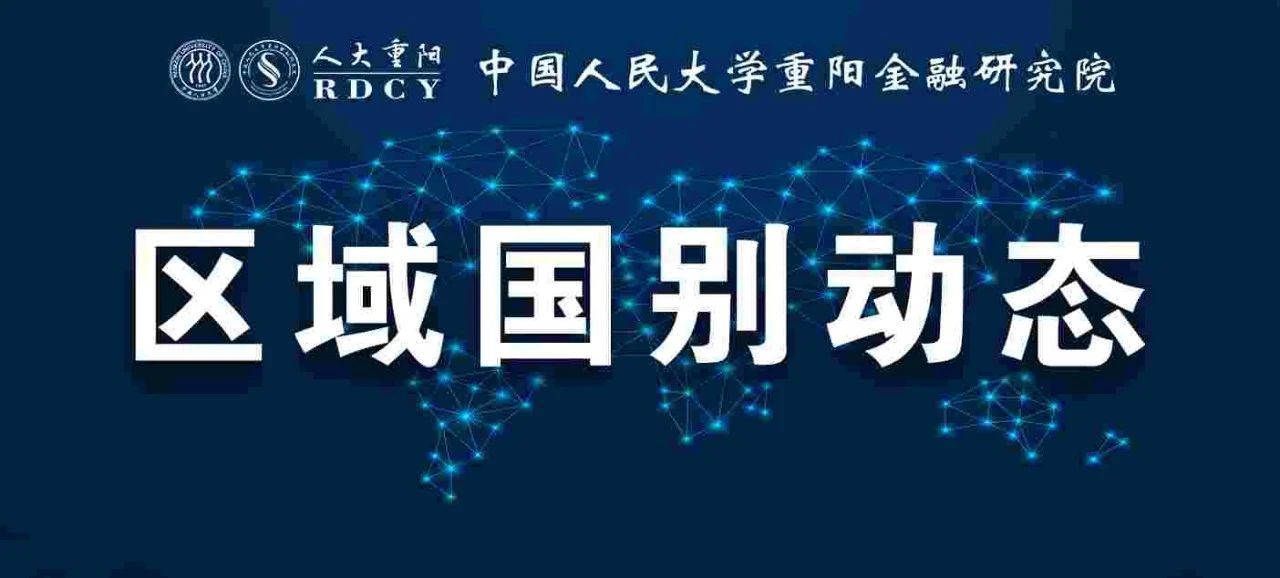发布时间:2024-07-10 作者: 人大重阳
追踪全球各大区域的政治、经济与社会动态,聚焦各国主流媒体与重要期刊的前沿理论观点,人大重阳特开设“区域国别动态”栏目,致力于为中国决策者、智库界同行提供有价值的研究参考。
编者按:追踪全球各大区域的政治、经济与社会动态,聚焦各国主流媒体与重要期刊的前沿理论观点,人大重阳特开设“区域国别动态”栏目,致力于为中国决策者、智库界同行提供有价值的研究参考。也欢迎关注人大重阳开设的“区域国别智库”微信公众号。

本期内容选取自,2024年6月2日,印度学者Happymon Jacob在《印度斯坦时报》网站发表的文章《宏大战略:崛起中的印度需要像大国那样思考》。印度总理莫迪缺席上海合作组织成员国元首理事会第二十四次会议,折射出印度当下何种心态?现将中文翻译及英文原文发布如下:
崛起中的印度必须制定一项宏大战略。如果没有宏大战略,我们的思想家、政治家和决策者将继续做短期规划和临时行动,并让政府的各个部门朝着不同的方向各自用力。新一届政府将于本月就职,考虑到印度一直在追求的全球抱负,现在正是开始思考印度宏大战略的大好时机。
但什么是宏大战略呢?简单地说,宏大战略可以被视为具有以下一些特征:对中长期地缘政治趋势进行动态评估,明确国家的长期目标,采用全政府方法实现这些目标,以及国家能力与目标之间的协同作用。宏大战略方针的作用是指导而不是教条,它必须有能力适应重大的外部变化。
在构思宏大战略时,有三个连续步骤是基础。首先,确定不同于次要目标和矛盾的主要目标和主要挑战(或矛盾)。第二步是确定并协同实现这些目标的手段,这些手段可能包括外部地缘政治机遇和内部物质能力。第三步是将自己的宏大战略目标和挑战与现有的地缘政治机遇联系起来。
在为印度制定宏大战略时,首先要对我们生活的世界进行客观评估。我认为,当前的世界秩序有四个主要特点:从一种秩序过渡到另一种秩序所引发的不稳定性;中美竞争的加剧和两极世界的潜在出现;科技竞争的兴起和新出现的科技鸿沟;以及中国作为潜在的下一个超级大国的崛起。
第二步是围绕印度最根本或最主要的目标,为印度量身定制宏大战略。当然,这些目标具有一定的主观性,不同的政府可能会有不同的处理方式。就印度而言,至少有三个首要目标:实现经济快速增长;做好抵御外来侵略的准备;为建设以印度为一极的亚洲多极化做出贡献。每个宏大目标都可以有更具体的政策目标。例如,利用印度洋-太平洋地区的地缘经济机遇将支持印度的经济增长。
第三,找出阻碍印度实现宏大战略目标的主要矛盾和次要矛盾。至于印度的主要矛盾,考虑到印度的两个主要目标(如上所述)因中国而变得复杂,中国的崛起位居榜首。此外,印度在周边地区面临的一些挑战、与巴基斯坦的一些问题源自与中国的矛盾。主要矛盾的逻辑也表明,印度必须集中精力解决次要矛盾,以便腾出资源集中解决主要矛盾。例如,向周边国家伸出援手,实现与巴基斯坦的和解,有助于更有效地应对中国的挑战。次要矛盾包括来自巴基斯坦的挑战、南亚国家利用中国制衡印度以及乌克兰对印度的影响。然而,只关注这些挑战而不解决主要矛盾可能会产生次优结果。
最后一步是提出问题:有哪些机会可以解决这些矛盾并实现印度的宏大战略目标?这些机遇包括:中美竞争加剧、国际体系混乱、全球关注印度洋-太平洋地区、国际社会对印度的积极看法以及国际体系的变化。如果是这样,印度必须利用这些机遇来应对其最重要的挑战或主要矛盾——中国。
宏大战略还必须转化为具体可行的战略,同时牢记国家的宏大战略目标。为实现这一目标,必须大力鼓励在政府内部持续发展长期视角并进行例行战略评估。因此,即将上任的政府必须考虑制定一份国家安全战略文件,牢记国家的长期目标及其必须在其中运作的战略环境。作为全面国家安全战略文件的一部分或补充,新德里还必须与各部门、行业机构、私营部门和思想领袖协商,就印度-太平洋、邻国、全球治理和亚洲多极化制定深思熟虑的政策。其中一些战略可分为公开版和保密版,前者更具前瞻性,后者更具政策针对性。
长期以来,印度只是对国际政治的拉力、压力和变幻莫测做出反应。不结盟和战略自主都不是宏大战略,它们充其量只是信心不足的印度的不成熟的组织原则。它们向世界传达了印度不想要、也不会做的东西,而不是印度想要或会做的东西。一个更加强大和自信的当代印度必须以宏大战略的形式阐明其世界观及其在世界上的地位。如果印度想成为一个大国,就必须开始像一个大国那样思考。
以下为英文版
Grand Strategy: A rising India needs to
think like a great power
By Happymon Jacob
A rising India must build a grand strategy. Without a grand strategy, our thinkers, politicians, and policymakers will continue to plan for the short-term, act ad hoc, and have the various arms of the government working in divergent directions. With a new government taking office this month, this is an opportune moment to begin thinking about a grand strategy for the country, given the global aspirations the country has been pursuing.
But what is a grand strategy? Simply put, a grand strategy could be viewed as having some of the following characteristics. A dynamic assessment of medium- to long-term geopolitical trends, clarity on long-term national objectives, an all-of-government approach to achieving those objectives, and a synergy between national capabilities and objectives. A grand strategic approach functions as a guide rather than a dogma, and it must have the ability to adapt to major external changes.
Three sequential steps are foundational in the conceptualisation of a grand strategy. First, the determination of primary objectives and primary challenges (or contradictions) as different from secondary objectives and contradictions. The second step is to identify and synergise the means to achieve those objectives, which may consist of external geopolitical opportunities and internal material capacity. The third step is to link one’s grand strategic objectives and challenges to available geopolitical opportunities.
In developing a grand strategy for India, the first step is to undertake an objective assessment of the world we live in. In my view, the current world order is marked by four key features: Instability induced by the transition from one order to another; sharpening United States (US)-China rivalry and the potential emergence of a bipolar world; the rise of tech competition and emerging tech divides; and the rise of China as a potential next superpower.
The second step is to tailor a grand strategy for India around the country’s most fundamental, or primary, objectives. These objectives are, of course, somewhat subjective and different governments may approach them differently. In the Indian case, there are at least three primary objectives: Achieving rapid economic growth; being prepared to defend against external aggression; and contributing to building a multipolar Asia in which India is a pole. Each of these grand objectives could have more specific policy objectives. For instance, utilising geo-economic opportunities in the Indo-Pacific would support India’s economic growth.
Third, identify the primary and secondary contradictions that come in the way of achieving India’s grand strategic objectives. As for India’s primary contradictions, an aggressive and unaccommodating rise of China tops the list considering two of India’s primary objectives, as identified above, are complicated by China. More so, several of India’s challenges in the neighbourhood, some of its problems with Pakistan, and the potential Chinese hegemony in Asia flow from the China contradiction. The logic of primary contradiction also suggests that the country must focus on resolving its secondary contradictions so as to free up resources to focus on the primary contradiction. Reaching out to the neighbourhood and achieving a rapprochement with Pakistan is, for instance, useful in dealing more effectively with the China challenge. Secondary contradictions include challenges from Pakistan, South Asian States using China to balance India, and the impact of Ukraine on India. However, focusing on those challenges without addressing the primary contradiction might produce suboptimal results.
The final step is to ask the question: What opportunities exist to address these contradictions and achieve India’s grand strategic objectives? Some such opportunities include the growing US-China competition, a chaotic international system, the global focus on the Indo-Pacific, a positive international view of India, and changes in the international system. If so, India must make use of these opportunities to deal with its most consequential challenge or primary contradiction, China.
A grand strategy must also be translated into specific actionable strategies keeping in mind the country’s grand strategic objectives. To achieve this, consistent development of a long-term perspective and routine strategic stock-taking within the government must be assiduously encouraged. The incoming government must, therefore, consider formulating a national security strategy document keeping in mind the country’s long-term objectives and the strategic environment it must operate in. As part of a comprehensive national security strategy document or as additions to it, New Delhi must also develop, in consultation with various departments, industry bodies, the private sector and thought leaders, well-thought-out policies on the Indo-Pacific, neighbourhood, global governance and a multipolar Asia. Some of these strategies could have public and confidential versions with the former more visionary and the latter more policy specific.
For far too long, India merely reacted to the pulls, pressures, and vagaries of international politics. Neither non-alignment nor strategic autonomy were grand strategies; they were at best inchoate organising principles of a still underconfident India. They communicated to the world what India did not want, and would not do, as opposed to what India wanted, or would do. A far more powerful and confident contemporary India must articulate its vision for the world and its place in that world in the form of a grand strategy. If India wants to be a great power, it must start thinking like one.
Happymon Jacob teaches India’s foreign policy at Jawaharlal Nehru University, Delhi, and is the founder of the Council for Strategic and Defence Research, a New Delhi-based think tank. The views expressed are personal
原文链接:
https://www.hindustantimes.com/opinion/a-rising-india-needs-to-think-like-a-great-power-101717349112001.html
(欢迎关注人大重阳新浪微博:@人大重阳 ;微信公众号:rdcy2013)